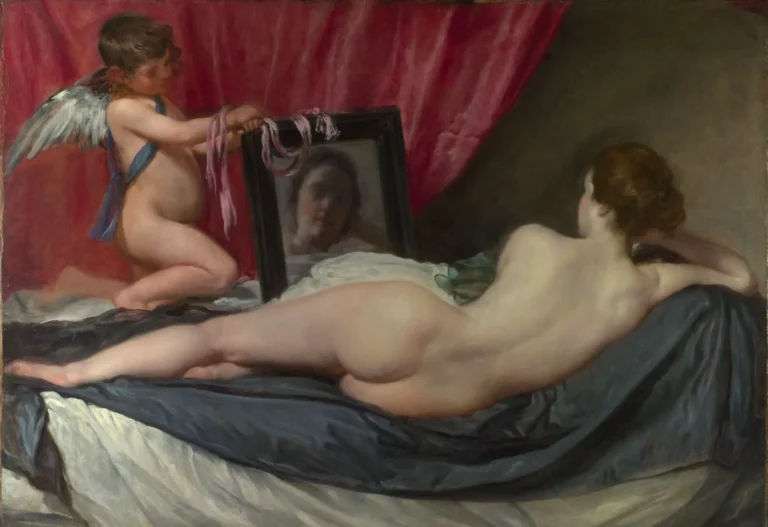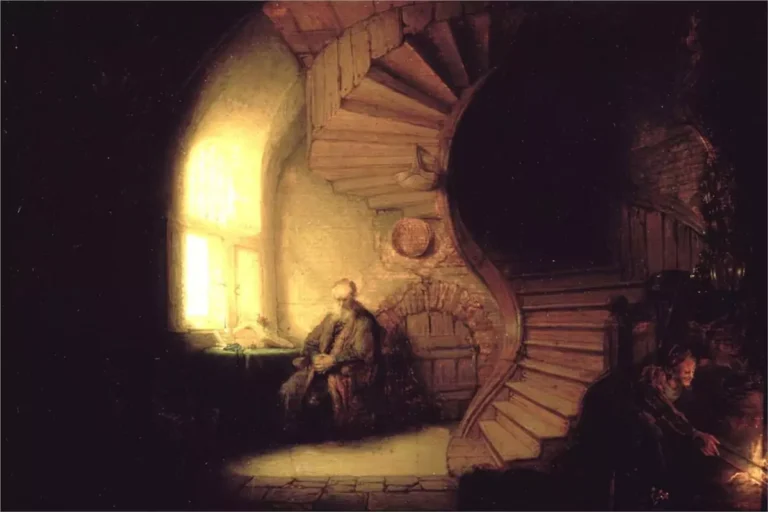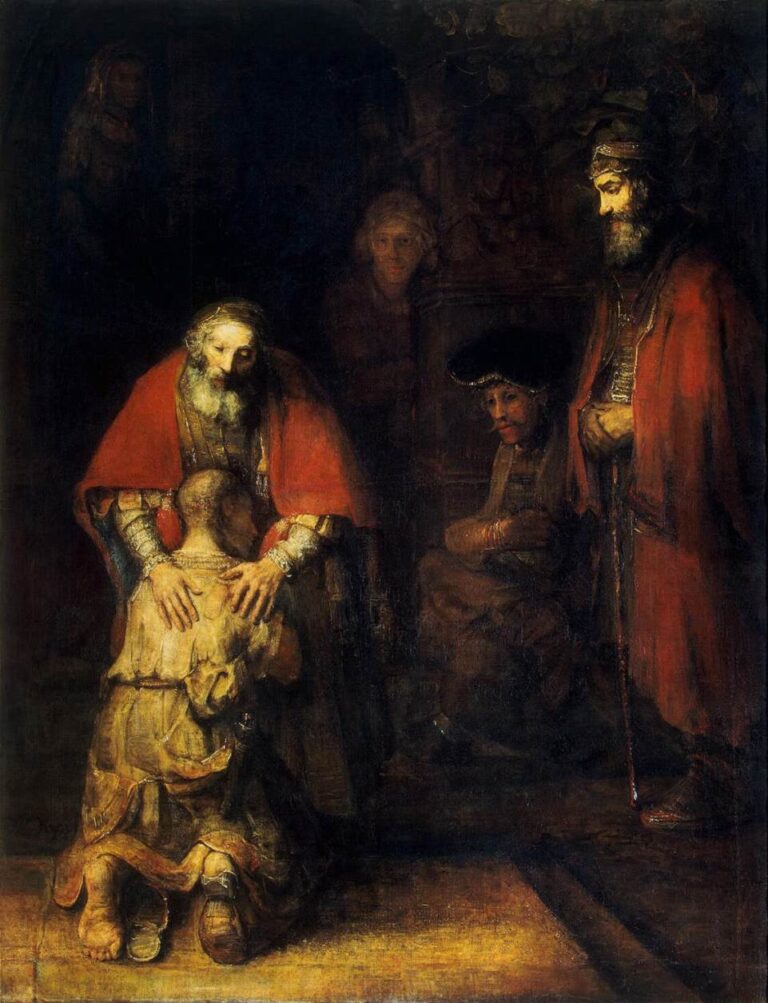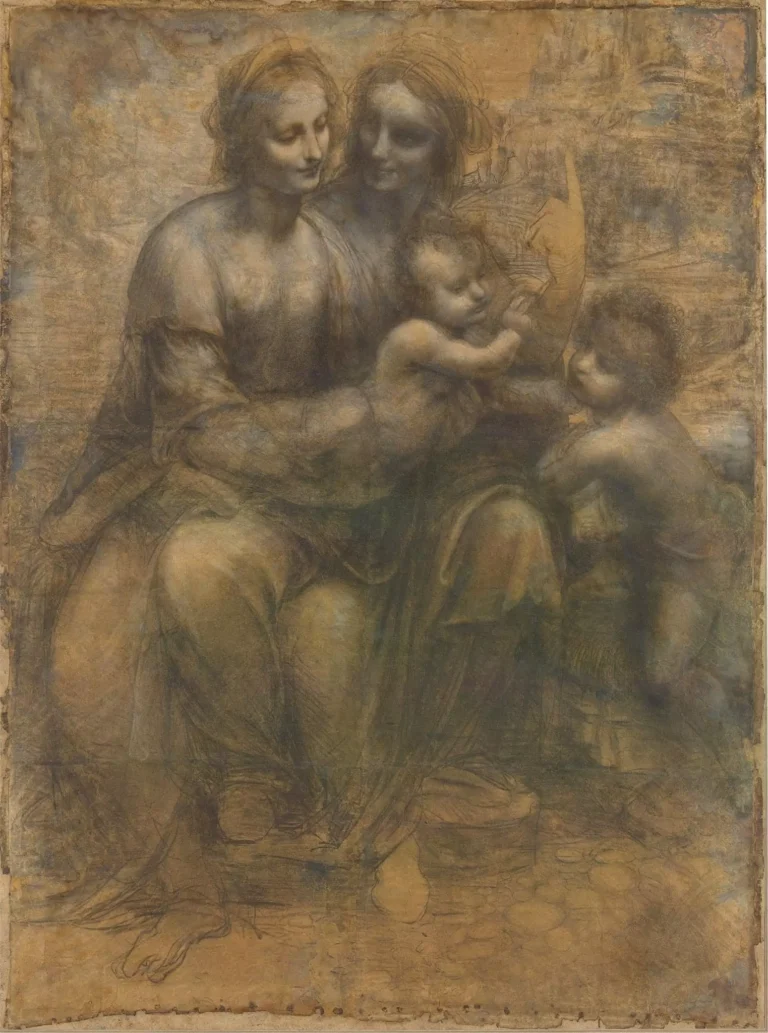Looking for a muse? Check no further. Discover the Best of Art, Culture, History & Beyond!

Artist: Michelangelo Merisi da Caravaggio
Title: The Adoration of the Shepherds
Year: 1609 Medium: Oil on canvas
Dimensions: 314 cm x 211 cm
Location: Regional Museum of Messina, Sicily
In the early 17th century, Michelangelo Merisi da Caravaggio, a luminary of Baroque art, crafted “The Adoration of the Shepherds,” a painting that continues to captivate audiences with its profound realism and emotional depth. Housed in the Regional Museum of Messina, this masterpiece offers a poignant portrayal of the nativity scene, reflecting Caravaggio’s distinctive approach to religious art.
Caravaggio’s life was as tumultuous as his art was revolutionary. Born in Milan in 1571, he relocated to Rome, where his intense naturalism and dramatic use of light and shadow, known as chiaroscuro, challenged the artistic conventions of his time. However, his volatile temperament led to numerous altercations, culminating in a fatal duel in 1606. Fleeing Rome to escape prosecution, Caravaggio sought refuge in various parts of Italy, including Naples, Malta, and Sicily.
It was during his Sicilian sojourn, specifically in Messina around 1609, that Caravaggio received the commission for “The Adoration of the Shepherds.” The painting was intended for the Capuchin Franciscan fathers at the Church of Santa Maria degli Angeli. This period marked the twilight of Caravaggio’s career, characterized by a deepening of his artistic expression, possibly influenced by his personal turmoil and the relentless pursuit by his adversaries.
“The Adoration of the Shepherds” stands as a testament to Caravaggio’s mastery in capturing the human condition. The composition is set within a dimly lit interior, where a shaft of light from the left illuminates the central figures, creating a striking contrast between light and shadow. This technique not only directs the viewer’s attention but also imbues the scene with a sense of immediacy and intimacy.
At the heart of the painting lies the Virgin Mary, depicted not as a celestial queen but as a humble, young mother. Clad in modest attire, she cradles the newborn Jesus, whose presence is the focal point of the gathered assembly. The shepherds, rendered with rugged realism, approach with expressions of awe and reverence. Their weathered faces and tattered clothing underscore their earthly existence, highlighting the accessibility of the divine to all strata of society.
Joseph, positioned slightly apart, observes the scene with a contemplative demeanor. A faint halo adorns his head, a subtle nod to his sanctity. The sparse setting, devoid of ornate embellishments, emphasizes the humility surrounding Christ’s birth. Elements such as a simple loaf of bread and a carpenter’s toolset in the foreground serve as symbols of sustenance and labor, grounding the sacred event in everyday reality.
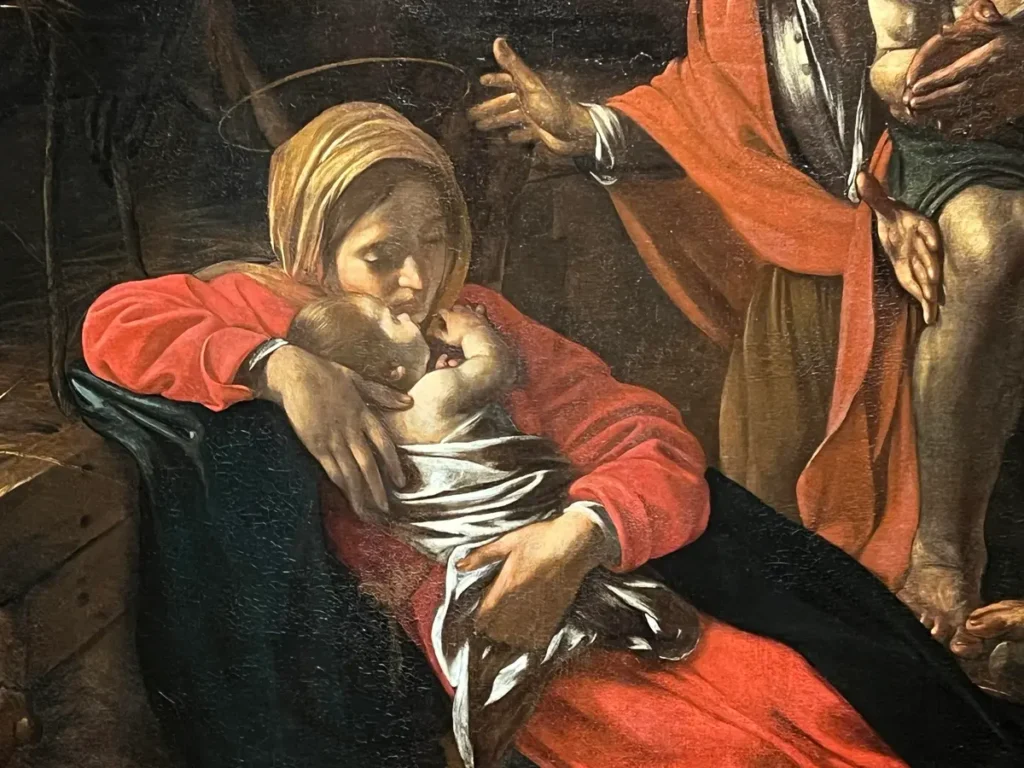
Caravaggio’s use of chiaroscuro in this work is particularly noteworthy. The interplay of light and darkness not only enhances the three-dimensionality of the figures but also conveys a deeper metaphorical significance. The illumination of the Christ child and those in close proximity suggests the dispelling of spiritual darkness, heralding the advent of salvation.
Recent Discoveries and Provenance
For centuries, it was widely accepted that Caravaggio painted “The Adoration of the Shepherds” during his stay in Messina. However, recent research has brought new insights into the painting’s provenance. In February 2025, art historian James Imam reported the discovery of a payment receipt in the historical archives of the Bank of Naples. This document indicates that the Capuchin Franciscans commissioned the painting and that payment was sent to Caravaggio in Naples, suggesting that the artwork was created there and subsequently transported to Messina.
This revelation not only reshapes our understanding of Caravaggio’s movements during his final years but also highlights the artist’s prolific output while in Naples. The possibility that Neapolitan artists had direct access to this masterpiece before its dispatch to Sicily offers new avenues for exploring Caravaggio’s influence on his contemporaries in the region.

This article is published on ArtAddict Galleria, where we explore the intersections of art, history, and culture. Stay tuned for more insights and discoveries!
